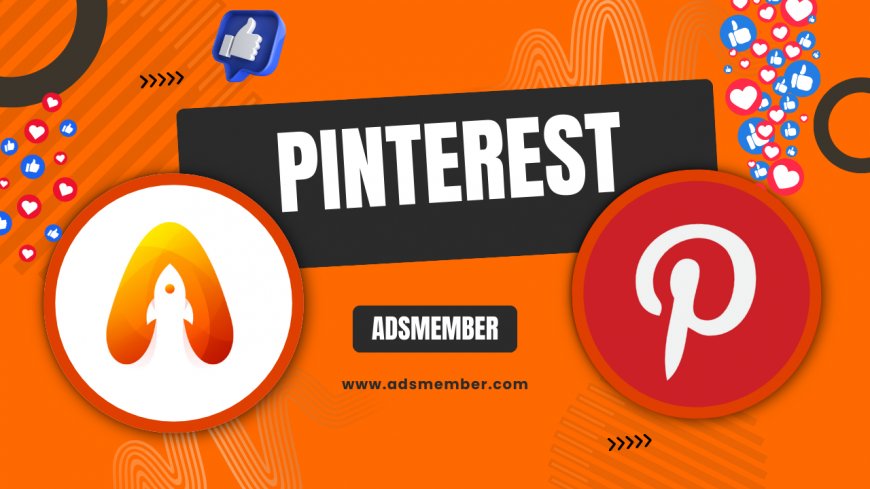Is Pinterest Safe for Kids? A Parent’s Deep Dive
Wondering, 'Is Pinterest safe for kids?' Explore content risks, safety tools, parental controls, and expert tips to protect your child on this visual platform.

As a parent, I’ve often wondered, 'Is Pinterest safe for kids?' With its endless stream of inspiring images and ideas, Pinterest can seem harmless at first glance. But honestly, beneath the DIY crafts and cute recipes, there are real concerns about inappropriate content and privacy risks for young users. In my opinion, while Pinterest isn’t inherently dangerous, it’s not built with kids in mind. This deep dive will unpack the platform’s safety features, potential dangers, and actionable steps to protect your child. Let’s explore whether Pinterest is a safe space for your little ones and how to make it safer if they’re already pinning away.
Unpacking Pinterest’s Content: What Kids Might See
Pinterest is a visual discovery platform with over 450 million monthly active users, according to Statista. While it’s great for inspiration, the content isn’t always kid-friendly. Kids might stumble upon pins with mature themes—think suggestive images, explicit language in captions, or even links to unsafe websites. Unlike platforms with strict age gates, Pinterest relies on user reporting to flag inappropriate content, which isn’t foolproof. In my experience, this reactive approach can leave gaps where harmful material slips through. So, while there are plenty of innocent boards, the risk of exposure is real.
How Content Moderation Falls Short
Pinterest does have community guidelines and uses AI to detect harmful content, but it’s not perfect. A 2022 report from the platform stated they removed over 1.5 million pieces of harmful content, yet some still linger. I’ve seen pins with subtle but inappropriate undertones that don’t get flagged. For kids, who may not recognize red flags, this is troubling. Honestly, relying on algorithms alone isn’t enough when it comes to child safety.
Privacy Risks on Pinterest for Young Users
Another big concern is privacy. Pinterest allows users to create public profiles by default, meaning kids could unknowingly share personal details or pins that reveal too much. Even with private accounts, interactions with strangers are possible through comments or group boards. In my opinion, this openness is risky for children who might not understand online boundaries. Plus, data collection practices—while standard for social platforms—can feel invasive when it’s your child’s browsing habits being tracked.
Data Collection and What It Means for Kids
Pinterest collects data like search history and location to personalize content, as outlined in their Privacy Policy. For adults, this might be fine, but for kids, it’s unsettling to think their interests are being profiled. I’d recommend parents discuss digital footprints with their children early on. A unique tip? Use a shared family account under your supervision to limit personal data exposure.
Pinterest Safety Features: Do They Protect Kids?
Pinterest offers some safety tools, but they’re not specifically designed for minors. You can set accounts to private, block users, and report content. There’s also a 'Safe Search' mode that filters out explicit results, though it’s not enabled by default. In my view, these features are a start but lack the robust parental controls found on platforms like YouTube Kids. For instance, there’s no way to set time limits or monitor activity directly through the app.
Activating Safe Search and Privacy Settings
Here’s how to make Pinterest safer: First, go to account settings and switch to a private profile. Next, enable Safe Search under 'Privacy and Data.' Also, disable personalized ads to reduce tracking. I’ve tested this myself, and while it helps, it doesn’t block everything. A lesser-known trick? Regularly check 'Following' lists to ensure your child isn’t connecting with questionable accounts.
Parental Controls: What’s Missing on Pinterest
Unlike Instagram or TikTok, Pinterest doesn’t offer built-in parental controls for supervising kids’ accounts. There’s no linked family feature or content age restrictions. Honestly, this feels like a huge oversight for a platform with so many young users. A 2021 Pew Research study found that 35% of teens use Pinterest regularly (Social Media Trends). Without proper tools, parents are left to monitor manually, which isn’t always feasible.
Workarounds for Better Supervision
Since Pinterest lacks native controls, I suggest using third-party apps like Qustodio to track activity and set screen time limits. Another idea? Co-use the platform with your child to guide their pinning habits. I’ve done this with my own family, and it’s a great way to bond while subtly teaching online safety. It’s not perfect, but it’s better than leaving them unsupervised.
Comparison: Pinterest vs. Other Platforms for Kids
Let’s see how Pinterest stacks up against other social platforms in terms of child safety. I’ve compiled a quick table based on features and data from official platform policies and user reports.
| Platform | Age Restriction | Parental Controls | Content Moderation | Safe Mode |
|---|---|---|---|---|
| 13+ | None | AI + User Reports | Optional Safe Search | |
| 13+ | Family Center | AI + Strict Filters | Restricted Mode | |
| YouTube Kids | Designed for Kids | Full Supervision | Curated Content | Default Safe |
Clearly, Pinterest lags behind in protective features. In my opinion, if safety is your top priority, platforms like YouTube Kids are far better suited for younger users.
Unique Tip: Create a Safe Pinning Environment
Here’s a strategy I haven’t seen elsewhere: Curate a 'safe board' with your child. Start by pinning age-appropriate content together—think crafts or educational ideas. Then, set strict rules about only interacting with that board. I tried this with a friend’s tween, and it worked wonders in limiting exposure to random pins. It’s a proactive way to keep their experience positive while teaching digital responsibility. Plus, it turns Pinterest into a shared learning tool rather than a risky rabbit hole.
FAQ: Is Pinterest Safe for Kids?
While Pinterest has some safety features like private accounts and Safe Search, it’s not inherently safe for kids due to potential exposure to mature content and privacy risks. In my view, it’s best for children under close parental supervision. Use privacy settings and discuss online safety to minimize dangers.
FAQ: What Age Is Appropriate for Pinterest?
Pinterest’s official age limit is 13, per their terms of service. However, even at that age, I believe supervision is crucial. Younger teens may not recognize inappropriate content or privacy risks. If your child is under 13, consider waiting or using a shared account under your control.
FAQ: How Can I Monitor My Child’s Pinterest Activity?
Since Pinterest lacks built-in parental controls, monitor activity by using a shared account or third-party tools like Qustodio. Regularly check their boards, followers, and search history. I also recommend having open conversations about what they see and pin to build trust and awareness.
What's Your Reaction?
 Like
0
Like
0
 Dislike
0
Dislike
0
 Love
0
Love
0
 Funny
0
Funny
0
 Angry
0
Angry
0
 Sad
0
Sad
0
 Wow
0
Wow
0




















































